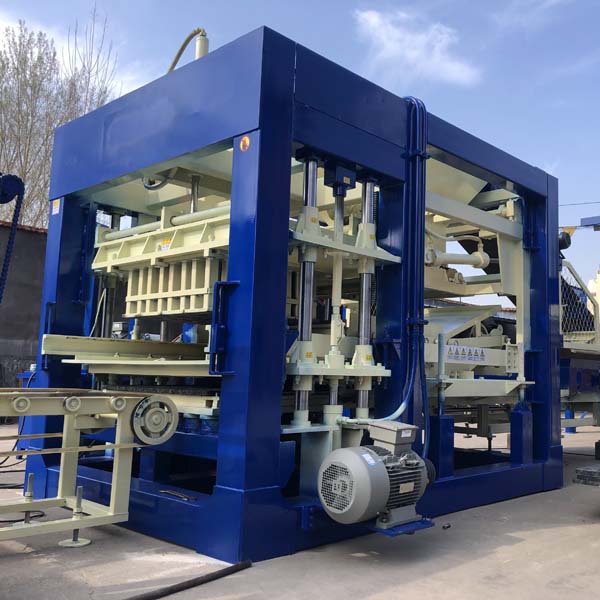
The construction industry has witnessed remarkable advancements over the years, shaping the way we build our cities and infrastructure.
One such revolutionary development is the advent of next-generation brick making machines, which have transformed the traditional construction landscape.
These cutting-edge machines bring forth a new era of efficiency, precision, and sustainability to brick production, leading to faster and smoother building processes.
This essay delves into the transformative impact of next-gen brick making machines, exploring their technological features, advantages, challenges, and the overall implications for the construction industry.
Technological Marvels: The Inner Workings of Next-Gen Brick Making Machines
The heart of any next-gen brick making machine lies in its innovative technological features.
Unlike their manual predecessors, these machines integrate automation, robotics, and advanced materials to streamline the brick production process.
High-speed conveyors, robotic arms, and computerized control systems work in harmony to ensure a seamless and precise operation.
These machines are designed to handle various stages of brick production, from raw material preparation to molding, drying, and even packaging.
One standout feature is the incorporation of 3D printing technology, which allows for intricate and customized brick designs to be crafted with unparalleled accuracy.
This capability opens the door to architectural creativity and enables builders to realize unique and complex structures that were once deemed unfeasible using traditional bricklaying methods.
Moreover, next-gen brick making machines utilize sustainable materials, such as recycled aggregates and low-carbon binders, aligning with the industry’s growing emphasis on eco-friendly construction practices.
Advantages Galore: Transforming Construction Dynamics
The introduction of next-gen brick making machines brings forth a plethora of advantages that revolutionize construction dynamics.
Firstly, the speed and efficiency at which these machines operate drastically reduce construction timelines.
Traditional brick production methods required significant manual labor and elongated curing periods, leading to project delays. However, with automated processes and optimized drying techniques, next-gen machines can produce bricks at an unprecedented rate, ensuring timely project completion.
Secondly, the precision and consistency offered by these machines elevate the quality of bricks produced.
Uniform dimensions, accurate textures, and enhanced structural integrity contribute to safer and more durable buildings.
This not only enhances the aesthetics of structures but also increases their longevity, minimizing maintenance costs in the long run.
Additionally, next-gen brick making machines contribute to a safer working environment.
The automation of labor-intensive tasks reduces the risk of on-site accidents, leading to improved occupational safety for construction workers.
Moreover, the reduction in physical labor requirements can help alleviate workforce shortages, which have been a common challenge faced by the construction industry in recent times.
Navigating Challenges: Overcoming Barriers to Adoption
While the potential of next-gen brick making machines is undeniable, their widespread adoption is not without challenges.
Initial investment costs pose a significant barrier for many construction firms, especially small and medium-sized enterprises.
Procuring and installing these advanced machines requires a substantial financial commitment, which might deter some stakeholders from embracing the technology.
Furthermore, the integration of new technology into established construction practices necessitates a skilled workforce capable of operating and maintaining these machines.
Training programs and educational initiatives must be developed to equip workers with the necessary skills to harness the full potential of next-gen brick making machines.
Bridging the skills gap and fostering a culture of technological proficiency within the construction industry is crucial for the successful adoption of these innovations.
Shaping the Future: Implications for the Construction Industry
The introduction of next-gen brick making machines marks a pivotal moment in the evolution of the construction industry.
These machines not only accelerate the building process but also reshape the way architects and engineers approach design.
The newfound ability to create intricate and bespoke brick patterns fuels architectural creativity, enabling the realization of ambitious and avant-garde structures that push the boundaries of traditional construction norms.
Sustainability also takes center stage as these machines embrace eco-friendly materials and optimized production techniques.
The reduction in waste, energy consumption, and carbon emissions aligns with global efforts to create more sustainable and resilient cities.
As the demand for environmentally conscious construction practices grows, next-gen brick making machines offer a viable solution to reduce the industry’s ecological footprint.
In conclusion, the introduction of next-gen brick making machines represents a game-changing leap for the construction industry.
The fusion of automation, precision, and sustainability not only accelerates construction timelines and enhances structural quality but also opens doors to unprecedented architectural possibilities.
While challenges related to cost and workforce skills must be addressed, the long-term benefits in terms of efficiency, safety, and environmental responsibility make these machines a compelling investment for the future of construction.
As we continue to witness the transformative impact of technology on various sectors, next-gen brick making machines stand as a shining example of innovation driving positive change in one of the world’s most vital industries.
